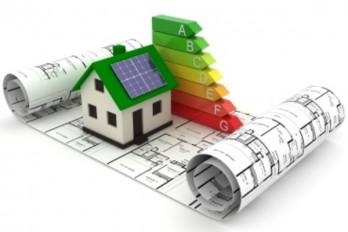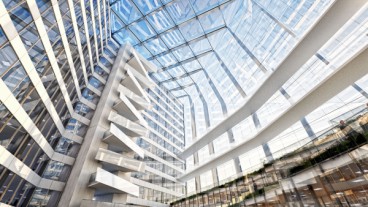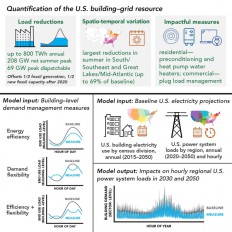UK’s first energy-positive office opens in Swansea

The UK's first energy-positive classroom generates more than one and a half times the solar energy it consumes according to the data collected from its first year of operation.
The researchers have already planned the next phase of their study, which involves collecting proof and data on an office building that was built using similar techniques. Nowadays, buildings are responsible for about 40% of UK energy consumption. The concept behind this innovative building, called the Active Office, shows how a new generation of low-carbon offices which produce their own supply of energy can be designed.
The conception of this innovation was made by SPECIFIC, a UK Innovation and Knowledge Center headed by Swansea University. Professor Dave Worsley, Research Director for SPECIFIC as well as Swansea University College of Engineering, clarified how SPECIFIC’s work involves a two-way connection between research and real-world application: "SPECIFIC's research focuses on developing solar technologies and the processing techniques that take them from the lab to full-scale buildings. With our building demonstration program we are testing and proving the 'buildings as power stations' concept in real buildings, which are used every day. The data obtained from these buildings is then fed back into our fundamental research into solar energy technologies and used to accelerate and steer their development." Some innovative technologies are used by the Active Office that will allow it to produce, store, and discharge solar energy in a single integrated system, including:
- A Photovoltaic Thermal system located on the south facing wall can generate heat as well as electricity from the sun in a single system
- A curved roof with built-in solar cells shows the versatile nature of the laminated photovoltaic panel
- Lithium-ion batteries for storing the generated electricity, and a 2,000-liter water tank for storing solar heat
The Active Office is constructed in a way that can be easily reproduced. Its assembly requires about one week, with most of the construction occurring off site. Furthermore, it uses only commercially available technologies, which means they can be easily used on any new building.
The Active Office and Classroom will be linked together with the ability to share energy and electric vehicles, demonstrating how the concept could be applied in an energy-resilient solar-powered community.
Energy positive buildings could benefit the UK significantly. A 2017 analysis showed that it would mean:
- Lower energy costs for the consumer
- Less need for peak central power generating capacity and associated reduction in stress on the National Grid, leading to improved energy security
- Reduced carbon emissions
"Offices are enormous consumers of energy, so turning them energy-positive has the potential to slash fuel bills and dramatically reduce their carbon emissions. Turning our buildings into power stations is a concept that works, as the Active Classroom shows. This new building will enable us to get data and evidence on how it can be applied to an office, helping us refine the design further. The Active Office is a first, but it isn't a one-off. It is quick to build using existing supply chains, and uses only materials that are already available. This is tomorrow's office, but it can be built today", said Kevin Bygate, chief operating officer of SPECIFIC. Alun Cairns, Secretary of State for Wales, adds: "The Active Office is a living example of how a building can make a difference to us and our environment using innovative technologies -and equally importantly creating jobs in Wales.''
Sources: Eurekalert.org, Phys.org
Sources: Eurekalert.org, Phys.org
Want to read more like this story?
The prospects for carbon-neutral buildings
Oct, 27, 2023 | NewsIn the United Kingdom, buildings account for 33% of greenhouse gas emissions and 40% of global ener...

EU Parliament is updating the EU's rules to further improve the energy efficiency of buildings
Apr, 12, 2018 | NewsFrom January 1st, 2021, all new buildings in the EU should use little or no energy for heating, cool...

The most innovative and sustainable office building in the world
Apr, 15, 2016 | NewsIt is called ‘The Edge’ and is located in the business district of Amsterdam, in the Net...

Data-Driven Siting: Revolutionizing Renewable Energy Efficiency
Dec, 20, 2024 | NewsBuilding efficient solar and wind farms requires more than just identifying areas with the most sun...

Best ways to reduce energy consumption in buildings
Apr, 14, 2016 | NewsPractices with greatest impact on energy conservation are under study Practices with greatest imp...

By 2050, half of the EU citizens could be generating their own renewable energy
Oct, 10, 2016 | NewsA people-powered energy revolution is possible and may be close at hand A people-powered energy r...

Energy storage could take renewable technology to a whole new level …
Jul, 04, 2016 | NewsStorage systems can make economic sense for renewable energy sources such as wind and solar, accordi...

World Sustainable Energy Days 2018 in Wels, Austria
Feb, 01, 2018 | NewsOne of the largest conferences on sustainable energy One of the largest conferences on sustainable...

Control building energy demand to preserve the electrical power resources
Jul, 07, 2021 | NewsA new study conducted in the United States quantifies how the optimization of the consumed energy in...
Trending

Vertical gardens in Mexico City to combat pollution

Saudi Park Closed After 360 Big Pendulum Ride Crashes to Ground, 23 injured

Characteristics of Load Bearing Masonry Construction

Taipei 101’s impressive tuned mass damper

Dutch greenhouses have revolutionized modern farming

Federal court rules Biden’s offshore drilling ban unlawful


